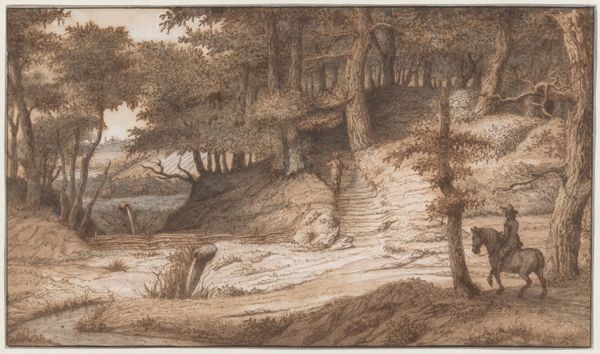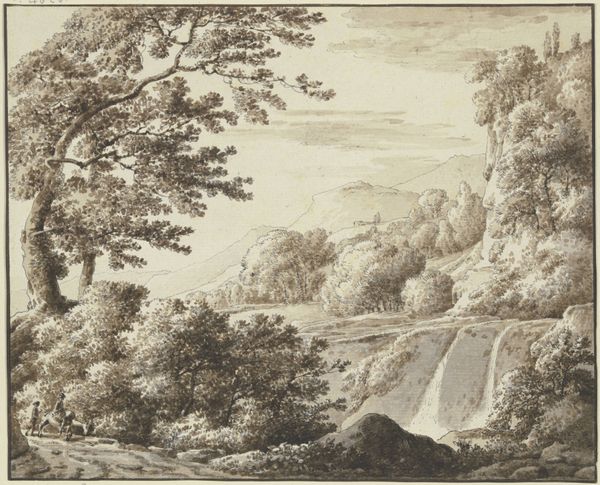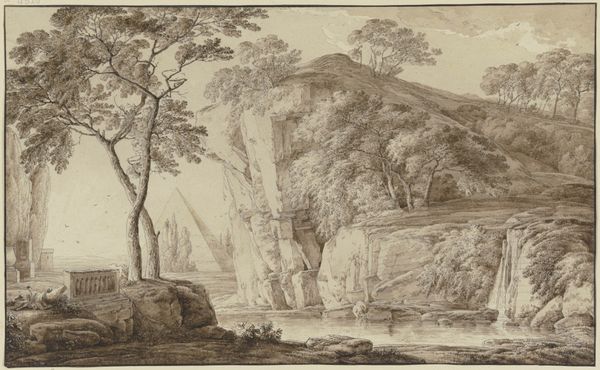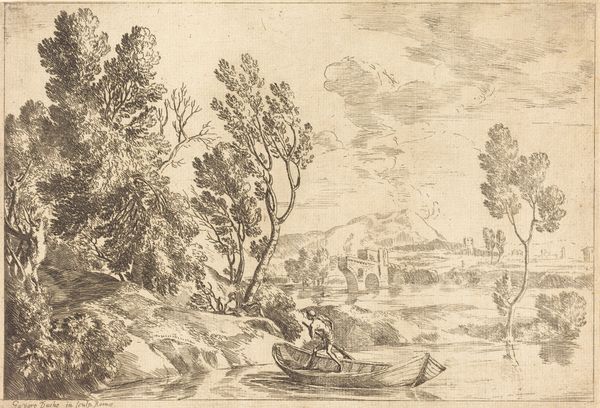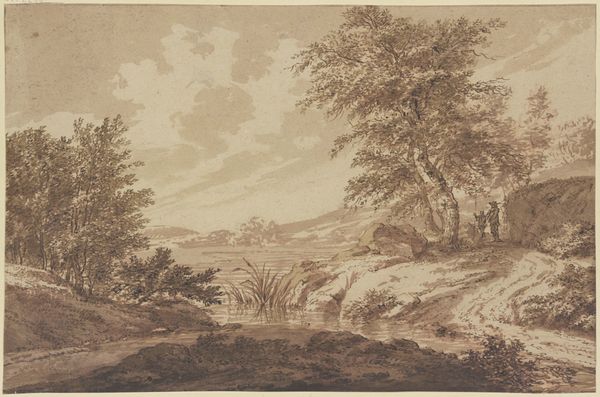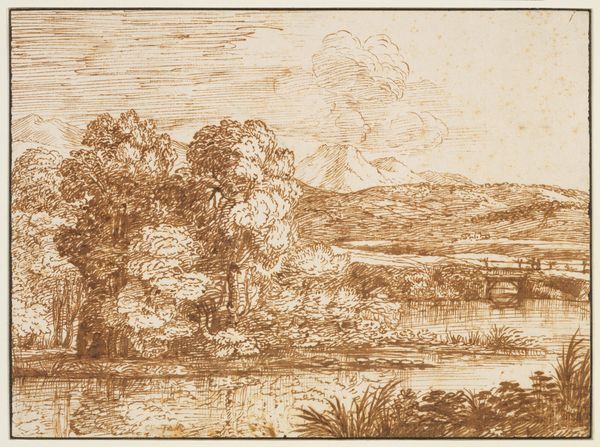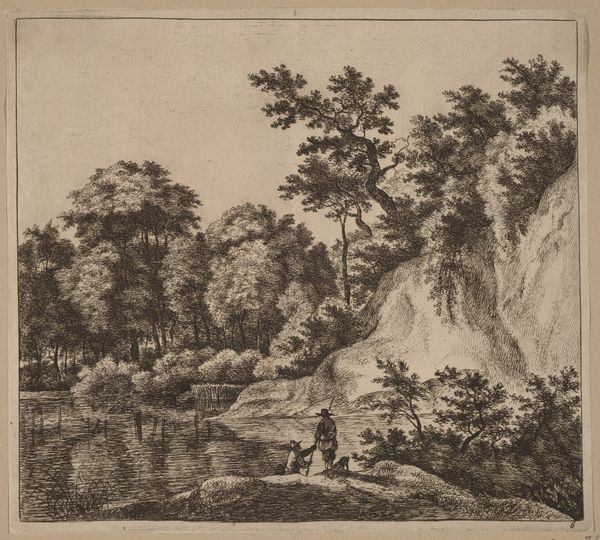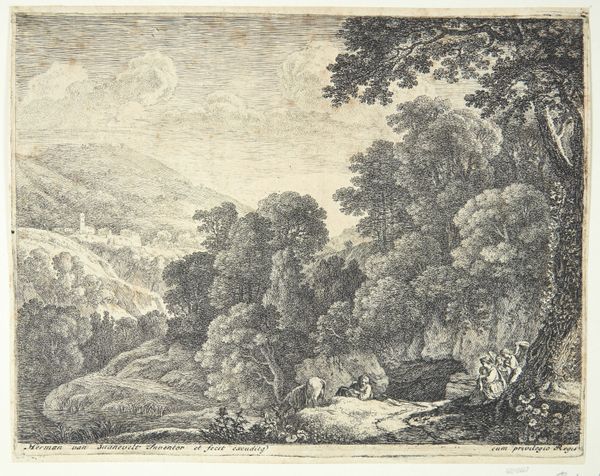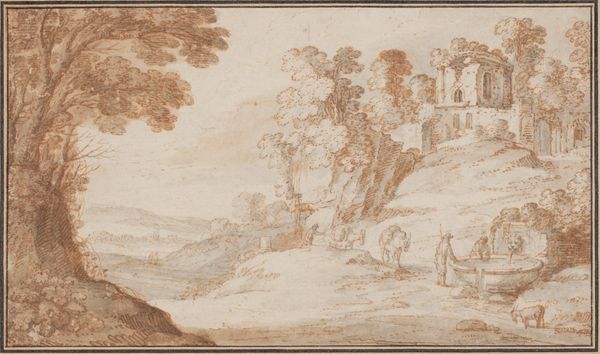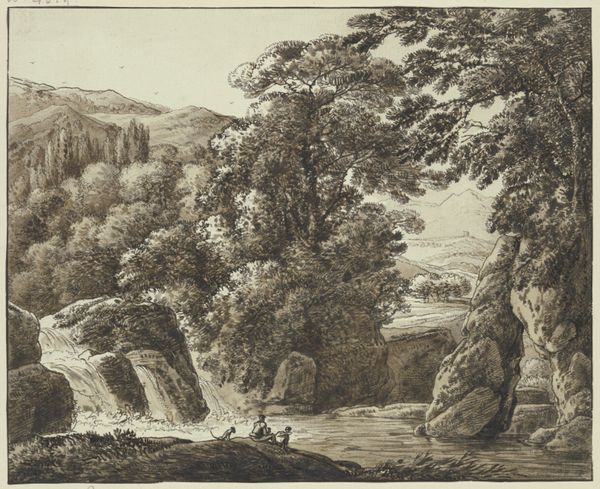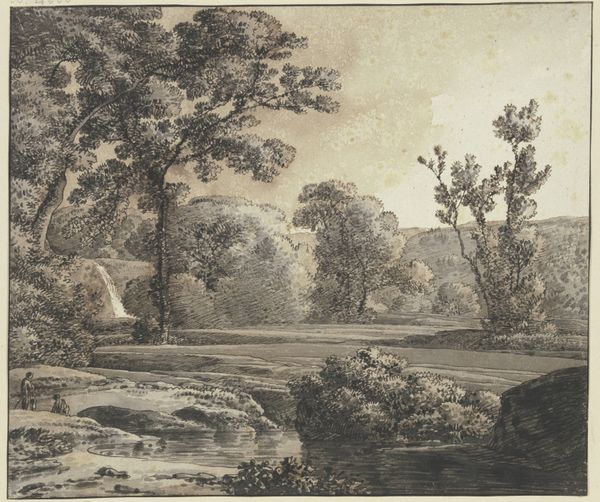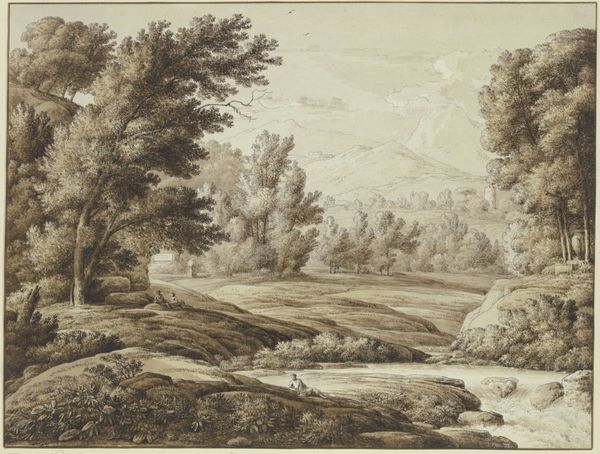
Landscape with Figures on the Bank of a River 1625 - 1675
0:00
0:00
drawing, print, etching, ink, engraving
#
drawing
#
baroque
# print
#
etching
#
landscape
#
figuration
#
ink
#
history-painting
#
engraving
Dimensions: 11 x 16 7/16 in. (28 x 41.8 cm.)
Copyright: Public Domain
Editor: So, this is Gaspard Dughet’s "Landscape with Figures on the Bank of a River," dating from roughly 1625 to 1675. It's a reddish-brown ink drawing – an etching, I think, with engravings too. The landscape feels quite idealized, almost theatrical. How do you interpret this work, considering its historical context? Curator: I see this piece as deeply embedded in the social and political currents of its time. Landscape painting, during the Baroque period, wasn't just about pretty scenery; it was about power, ownership, and the idealization of the natural world in ways that often mirrored colonial ambitions. Who do you think is being included, and who is being excluded? What statements are being made about nature's relationship to those in power? Editor: That's a fascinating perspective! I was focused on the aesthetic aspects, the composition and the skillful rendering of light and shadow. I didn’t really think about the political implications. Curator: Consider the figures within the landscape. Are they simply decorative elements, or do they represent something more? Think about who had the privilege to leisurely exist in these idyllic settings during that period. Doesn't that framing tell us who gets to experience the sublime and the beautiful? Editor: It does change my understanding. The seemingly innocent scene takes on a different, more complex meaning when viewed through the lens of power dynamics and social hierarchies. So, these landscapes were, in a sense, constructing and reinforcing a certain social order? Curator: Exactly. Dughet, working in Rome, was part of a system that promoted specific ideas about land, ownership, and civilization itself. It encourages us to question the romanticized visions of nature and delve into the unspoken narratives of access, control, and perhaps even exploitation embedded within them. Editor: I never would have considered this perspective! Thank you, this is certainly enriching. Curator: And thank you for your observations; it is the convergence of different views that helps make art appreciation a robust engagement.
Comments
No comments
Be the first to comment and join the conversation on the ultimate creative platform.

